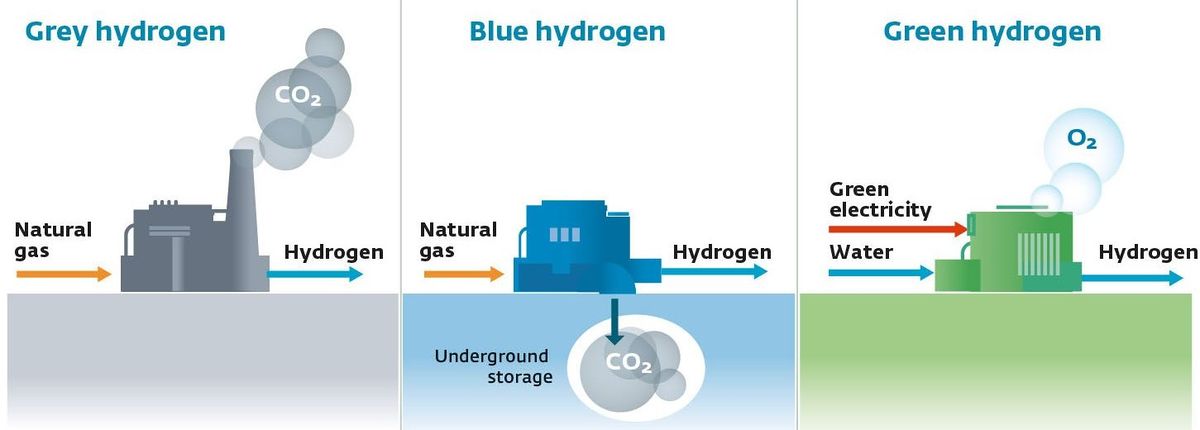DEHN – Bigger footprint in Asia: DEHN founds subsidiary in Japan | DEHN International
DEHN steadily continues its course of international growth and emphasises the strategic importance of the island nation of Japan by establishing a new subsidiary there.
DEHN’s smart protection solutions, especially for the expansion of regenerative energies or telecommunications, have been well received in the Japanese market.
“Global megatrends such as renewable energies, electric mobility and digitalisation are key drivers of our growth in recent years. After all, energy networks of the future can only function reliably with appropriate protection solutions. And it is precisely these solutions that we have to offer,” says Dr Philipp Dehn, CEO of DEHN SE: “By choosing Japan as a location, we are reaffirming our commitment to quality and safety in a country that itself sets high standards in lightning and surge protection and drives forward innovative energy solutions.”
With “Japan’s Roadmap to Beyond-Zero Carbon”, the ambitious nation is following the megatrend of decarbonisation and aims to drastically reduce carbon emissions by 2050. The focus here is on the expansion of sustainable energy, such as photovoltaics, wind energy and hydrogen technology, as well as the telecommunications sector. The new DEHN subsidiary will therefore concentrate on these key industries, making a significant contribution to protecting critical infrastructure. Local presence will also enable DEHN to offer customised solutions to meet the specific requirements of the Japanese market.
The subsidiary based in Yokohama, will operate under the name DEHN JAPAN K.K..
SourceDEHN
EMR Analysis
More information on DEHN: See the full profile on EMR Executive Services
More information on Dr. Philipp Dehn (Chairman of the Board & CEO, DEHN SE + Acting CSO, DEHN SE + Chairman, ZVEI): See the full profile on EMR Executive Services
More information on “Japan’s Roadmap to Beyond-Zero Carbon”: https://www.meti.go.jp/english/policy/energy_environment/global_warming/roadmap/ + Japan’s roadmap to tackle the challenge of climate change is bold and ambitious.
It is marked by three key milestones. Firstly, Japan’s commitment under the United Nations Climate Change Convention to reduce greenhouse gas (GHG) emissions by 26% from 2013 levels by 2030.
The second milestone is to promote the development of innovative technologies by 2050 that enable Japan to contribute to the reduction in accumulated atmospheric CO2 globally to “Beyond Zero”.
The third and most ambitious milestone unveiled by Prime Minister Suga Yoshihide on October 26, 2020, calls for Japan to achieve net zero GHG emissions by 2050. This bold pledge sets Japan on a course to become Carbon Neutral in 30 years.
More information on Ministry of Economy, Trade and Industry (METI), Japan: https://www.meti.go.jp/english/index.html + The Ministry of Economy, Trade and Industry or METI, is a ministry of the Government of Japan. It was created by the 2001 Central Government Reform when the Ministry of International Trade and Industry merged with agencies from other ministries related to economic activities, such as the Economic Planning Agency.
More information on Ken Saito (Minister of Economy, Trade and Industry (METI), Japan): https://www.meti.go.jp/english/aboutmeti/profiles/individual/aMinister.html
EMR Additional Notes:
- Carbon Dioxide (CO2):
- Primary greenhouse gas emitted through human activities. Carbon dioxide enters the atmosphere through burning fossil fuels (coal, natural gas, and oil), solid waste, trees and other biological materials, and also as a result of certain chemical reactions (e.g., manufacture of cement). Carbon dioxide is removed from the atmosphere (or “sequestered”) when it is absorbed by plants as part of the biological carbon cycle.
- Biogenic Carbon Dioxide (CO2):
- Biogenic Carbon Dioxide (CO2) and Carbon Dioxide (CO2) are the same. Scientists differentiate between biogenic carbon (that which is absorbed, stored and emitted by organic matter like soil, trees, plants and grasses) and non-biogenic carbon (that found in all other sources, most notably in fossil fuels like oil, coal and gas).
- Carbon Capture and Storage (CCS):
- CCS involves the capture of carbon dioxide (CO2) emissions from industrial processes. This carbon is then transported from where it was produced, via ship or in a pipeline, and stored deep underground in geological formations.
- CCS projects typically target 90 percent efficiency, meaning that 90 percent of the carbon dioxide from the power plant will be captured and stored.
- Decarbonization:
- Reduction of carbon dioxide emissions through the use of low carbon power sources, achieving a lower output of greenhouse gasses into the atmosphere.
- Carbon Footprint:
- There is no universally agreed definition of what a carbon footprint is.
- A carbon footprint is generally understood to be the total amount of greenhouse gas (GHG) emissions that are directly or indirectly caused by an individual, organization, product, or service. These emissions are typically measured in tonnes of carbon dioxide equivalent (CO2e).
- In 2009, the Greenhouse Gas Protocol (GHG Protocol) published a standard for calculating and reporting corporate carbon footprints. This standard is widely accepted by businesses and other organizations around the world. The GHG Protocol defines a carbon footprint as “the total set of greenhouse gas emissions caused by an organization, directly and indirectly, through its own operations and the value chain.”
- CO2e:
- CO2e means “carbon dioxide equivalent”. In layman’s terms, CO2e is a measurement of the total greenhouse gases emitted, expressed in terms of the equivalent measurement of carbon dioxide. On the other hand, CO2 only measures carbon emissions and does not account for any other greenhouse gases.
- A carbon dioxide equivalent or CO2 equivalent, abbreviated as CO2-eq is a metric measure used to compare the emissions from various greenhouse gases on the basis of their global-warming potential (GWP), by converting amounts of other gases to the equivalent amount of carbon dioxide with the same global warming potential.
- Carbon dioxide equivalents are commonly expressed as million metric tonnes of carbon dioxide equivalents, abbreviated as MMTCDE.
- The carbon dioxide equivalent for a gas is derived by multiplying the tonnes of the gas by the associated GWP: MMTCDE = (million metric tonnes of a gas) * (GWP of the gas).
- For example, the GWP for methane is 25 and for nitrous oxide 298. This means that emissions of 1 million metric tonnes of methane and nitrous oxide respectively is equivalent to emissions of 25 and 298 million metric tonnes of carbon dioxide.
- Carbon Credits or Carbon Offsets:
- Permits that allow the owner to emit a certain amount of carbon dioxide or other greenhouse gases. One credit permits the emission of one ton of carbon dioxide or the equivalent in other greenhouse gases.
- The carbon credit is half of a so-called cap-and-trade program. Companies that pollute are awarded credits that allow them to continue to pollute up to a certain limit, which is reduced periodically. Meanwhile, the company may sell any unneeded credits to another company that needs them. Private companies are thus doubly incentivized to reduce greenhouse emissions. First, they must spend money on extra credits if their emissions exceed the cap. Second, they can make money by reducing their emissions and selling their excess allowances.
- Hydrogen:
- The atom of hydrogen is the first element in the periodic table, with chemical symbol H and the first element created after the Big Bang. It is the most common substance in the universe and the richest energy source for stars like the sun. It consists of one proton (a core unit of positive charge) and one electron (negative charge).
- Hydrogen doesn’t exist naturally on Earth. Since it forms covalent compounds with most non-metallic elements, most of the hydrogen on Earth exists in molecular forms such as water or organic compounds. Combined with oxygen, it is water (H2O). Combined with carbon, it forms methane (CH4), coal, and petroleum. It is found in all growing things (biomass).
- Hydrogen (H2) is the most abundant element on earth but it rarely exists alone, therefore it is produced by extracting it from its compound.
- Hydrogen can be produced in numerous ways. Some methods produce CO2 while others are carbon free.
- H2 can be renewable or decarbonized if produced using renewable or carbon free electricity.
- Hydrogen has the highest energy content of any common fuel by weight.
- Hydrogen is a high efficiency, low polluting fuel that can be used for transportation, heating, and power generation in places where it is difficult to use electricity or as a CO2 neutral feedstock for chemical processes (ammonia-fertilizers).
- Grey, Blue or Green Hydrogen:
- There is a growing international consensus that clean hydrogen will play a key role in the world’s transition to a sustainable energy future. It is crucial to help reduce carbon emissions from industry and heavy transport, and also to provide long-term energy storage at scale.
- Researchers have found that clean hydrogen still costs too much to enable it to be widely deployed. Prices may not come down sufficiently until the 2030s, according to some estimates. But despite the uncertainty surrounding the future of clean hydrogen, there are promising signs that it could become more affordable sooner than expected.
- Where the hydrogen comes from is important. At the moment, it’s mainly produced industrially from natural gas, which generates significant carbon emissions. That type is known as “grey” hydrogen.
- A cleaner version is “blue” hydrogen, for which the carbon emissions are captured and stored, or reused.
- The cleanest one of all is “green” hydrogen, which is generated by renewable energy sources without producing carbon emissions in the first place.

- Hydrogen Electrolyzer:
- An electrolyzer is a system that uses electricity to break water into hydrogen and oxygen in a process called electrolysis. Through electrolysis, the electrolyzer system creates hydrogen gas.
- Steam at the cathode combines with electrons from the external circuit to form hydrogen gas and negatively charged oxygen ions. The oxygen ions pass through the solid ceramic membrane and react at the anode to form oxygen gas and generate electrons for the external circuit.



